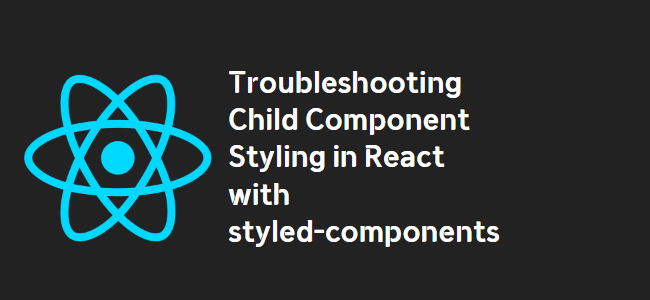
How to Style Child Components in React Styled-Components
When working with React and styled-components, it’s common to come across situations where you need to style the child components of a styled component. However, sometimes the styles you apply end up being sent to the parent component instead of the intended child component. In this blog post, we’ll explore how to properly style child components in React using styled-components.
Understanding the Issue
Before diving into the solution, let’s first understand why the styles are not being applied to the child component as intended. In the provided code, you are missing the dollar sign ($) before the CardImage component. This is causing the styles to be applied to the parent component instead.
export const CardImage = styled.div`
position: relative;
`
export const Card = styled.div`
position: relative;
${CardImage}{
max-height: 60%;
overflow: hidden;
}
`
Additionally, it seems that you are trying to conditionally style the child component based on a prop called “horizontal.” However, when you add a condition before rendering the child component, the styles are not being applied correctly. Let’s address this issue as well.
The Solution
To properly style the child component while using a condition, we need to import the ‘css’ function from styled-components. This function allows us to create style blocks within styled-components and apply conditions to them.
import styled, { css } from "styled-components";
export const CardImage = styled.div`
position: relative;
`
export const Card = styled.div`
position: relative;
${props => props.horizontal && css`
${CardImage}{
max-height: 60%;
overflow: hidden;
}
`}
`
By using the ‘css’ function, we can now properly conditionally style the CardImage component based on the ‘horizontal’ prop. The styles will be applied only when the ‘horizontal’ prop is true.
Alternative Approach
If you prefer using separate styled-components for each child component, you can achieve the desired result by structuring your code slightly differently. Here’s an alternative approach:
const StyledCard = styled.div`
// styles for the parent component
`;
const StyledImage = styled.img`
// styles for the image component
`;
class CardImage extends Component {
render() {
return <StyledImage />;
}
}
export default class Card extends Component {
render() {
return (
<StyledCard>
<CardImage />
</StyledCard>
);
}
}
In this approach, we create separate styled-components for the parent component (StyledCard) and the child component (StyledImage). This provides more clarity and control over the styles applied to each component.
Conclusion
Styling child components with React and styled-components requires attention to detail. By using the correct syntax and understanding how to apply styles conditionally, you can ensure that your styles are properly applied to the intended child components. This will help you create visually appealing and dynamic UIs in your React applications.
Remember to always double-check your code and use the appropriate syntax when working with styled-components in React. With practice, you’ll become more comfortable with styling child components and have greater control over the overall design of your React applications.
